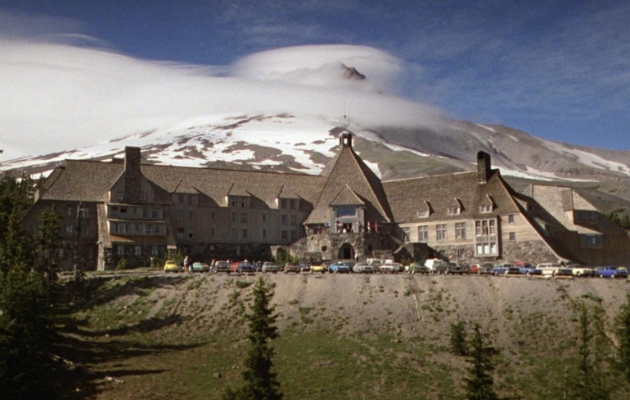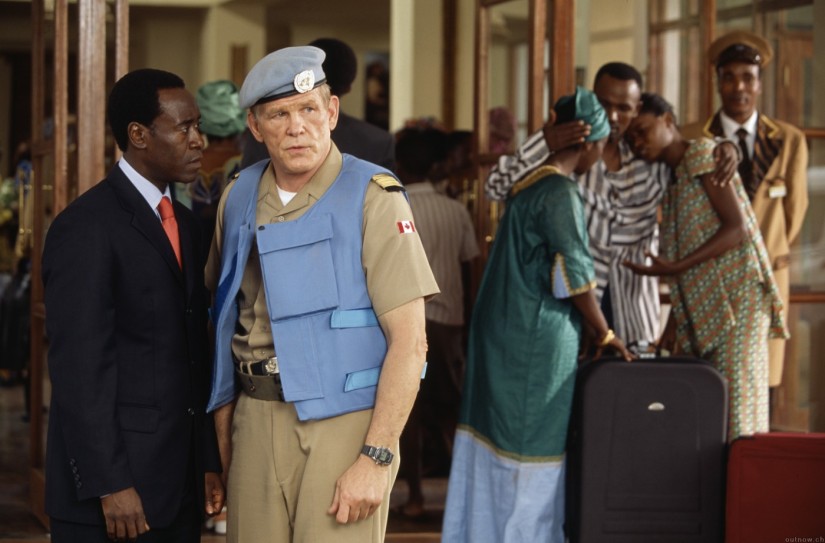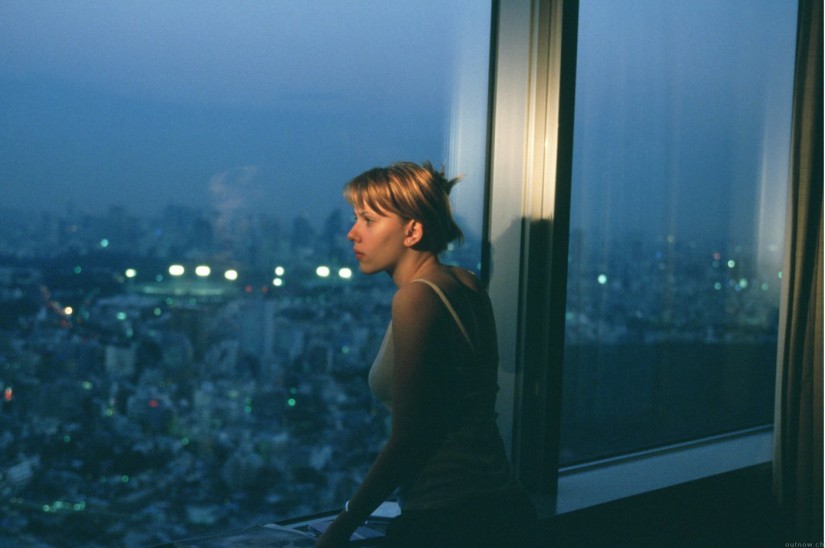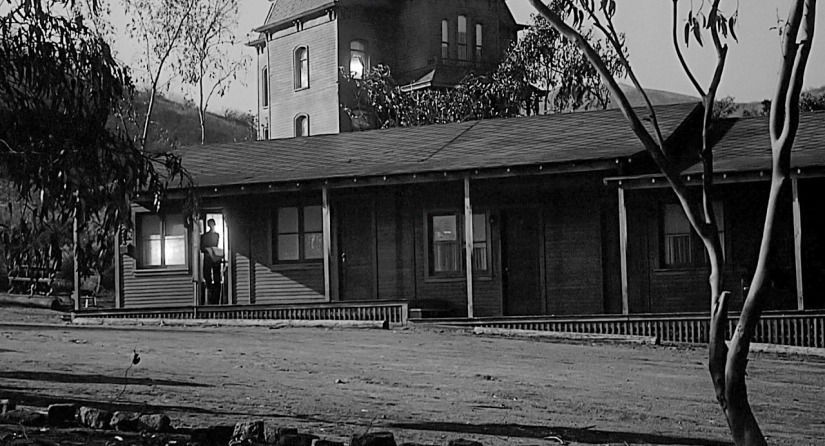If there’s one thing in this world that we never seem to be running low on – besides those oddly specific Netflix categories that keep popping up, that is – it is places for you to rest your weary head.
Hostels, other people’s flats, even so-called Shepherds Huts (or, in other words, a wooden horse trailer with a few fairy lights) mean that we now live in a world where pretty much anything can be chucked onto Airbnb and passed off as ‘alternative’ – dog kennels, swimming pools, people’s food compost bins.
Of course, this now means that anything that resembles the four walls of a fancy Hotel – for anyone below the age of 35 – is now left to gather dust in the annals of ancient myth.
Cinema, over the years, however, has kept the jolly old Hotel tradition of crisp bedsheets, eccentric lobby boys, and blood-filled elevators firmly alive.
With the release of Bad Times at the El Royale, we take a look at some of cinema’s most iconic Hotels.
We hope you enjoy your stay…

The Overlook – The Shining (1980)
No chatter about cinema’s most iconic hotels can be complete without mentioning The Overlook: the unsettling setting for both Stephen King’s acclaimed novel The Shining and Kubrick’s celebrated adaptation – well, celebrated by all bar King himself.
Built on a Native American burial ground, The Overlook, with its vast, snaking corridors and isolated location, is the silent, overarching villain of the piece. A stronghold for all manner of sinister sights, and standing in as a terrifying embodiment of Jack Torrance’s (Jack Nicholson) increasingly troubled psyche, this is one hotel where a leaky showerhead is the least of your worries.
What TripAdvisor would say: Nice rugs. Reading material on offer a tad repetitive. Room 237 needs some refurbishments. Decaying woman in bath.

The Grand Budapest Hotel – The Grand Budapest Hotel (2014)
And now for something altogether more eccentric.
As one might correctly assume from its title alone, a building labelled the Grand Budapest is going to be pretty lavish – lavish in that wonderfully bonkers Wes Anderson way, of course.
Vast, colourful and home to a plethora of zany employees, the Grand Budapest Hotel is certainly one for ‘Gap Ya’ students the world over.
What TripAdvisor would say: That bloke called Gustave or Ralph – something like that – is a pretty whacky chap. Posh, but one killer moustache.

Hôtel des Mille Collines – Hotel Rwanda (2004)
While a number of establishments on this list contribute, in one way or another, to the taking of lives, the hotel of Terry George’s 2004 film Hotel Rwanda – based on the remarkable true story of Paul Rusesabagina – saves them.
Based on events that occurred during the horrific genocide in the titular country in the spring of 1994, Hotel Rwanda recounts the extraordinary selflessness of everyman Rusesabagina (captured by a wonderfully convincing performance from Don Cheadle) who, in his role as popular hotel manager, acts to keep safe thousands of Hutu and Tutsi refugees fleeing the violence when the rest of the world was turning a blind eye.
Standing as an extension of the man in charge of its upkeep, these four walls emit the same warmth, the same kindness, the same protection, and the same power during a time of most unthinkable brutality.
What TripAdvisor would say: Come for the sun and Gorilla trekking. Stay for the inspiring, Schindler-esque heroics.

Park Hyatt Tokyo – Lost in Translation (2003)
The setting for much of the quiet indie-ness that surrounds Lost in Translation’s oddly touching central pairing – Bill Murray’s ageing movie star and Scarlett Johansson’s wide-eyed, but detached, Philosophy graduate – the Park Hyatt Tokyo plays an important role in the visual identity of Sofia Coppola’s cult classic.
From views of the neon Tokyo skyline seen through hotel windows, to sequences of characters alone in their room, to framing that elicits deep-rooted human connection, this is a setting that lends itself perfectly to the film’s themes of loneliness, seclusion, and companionship.
More than simply offering a complimentary robe and slippers, the Park Hyatt’s peculiar concoction of cultures silently goes about its business of emphasising the unlikely bond between two figures alienated from the very different worlds they have arrived from. Start taking notes, Travel Lodge…
What TripAdvisor would say: For relaxing – and slightly enigmatic times – make it Park Hyatt time.

The Bates Motel – Psycho (1960)
It’s a certified sign that you’re going a little mad (hey, we all do sometimes, remember) if, after watching Alfred Hitchcock’s genre-defining Psycho, you still think it’s a good idea to pull into an off-road, down-beat motel for the night.
In the most terrifyingly ordinary way possible, the Bates Motel is the thing of nightmares. Creepily bland, complete with overly friendly proprietors and peculiar taxidermy collections, the Bates Motel provides the backdrop for one of the finest examples of near-perfect horror cinema, and a more than questionable dabbling with all things Oedipus.
What TripAdvisor would say: Decent showers. Although I never shook that feeling that I was being watched. If I’m honest, the rooms could really do with a mother’s touch.

